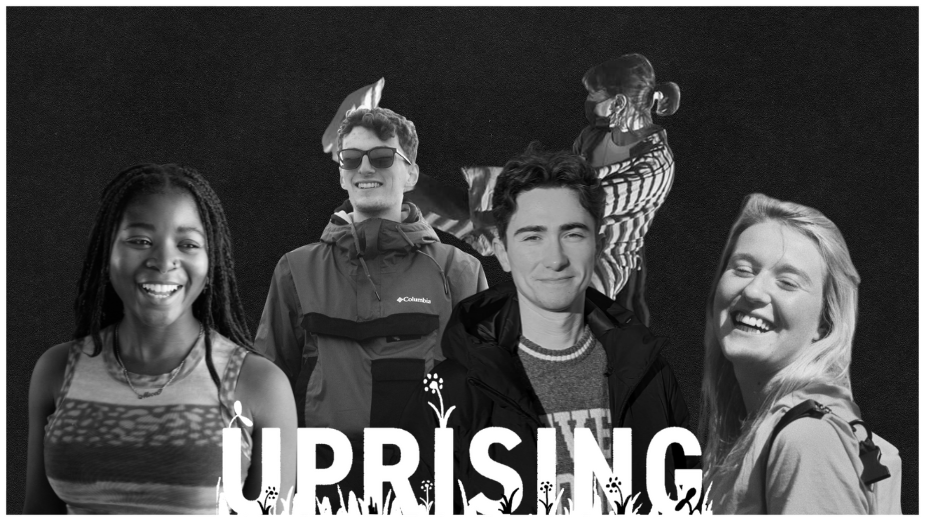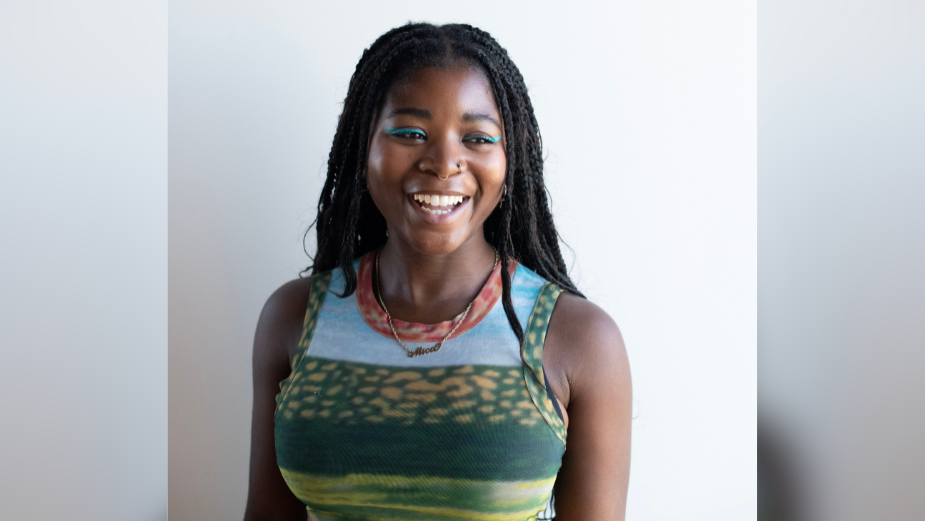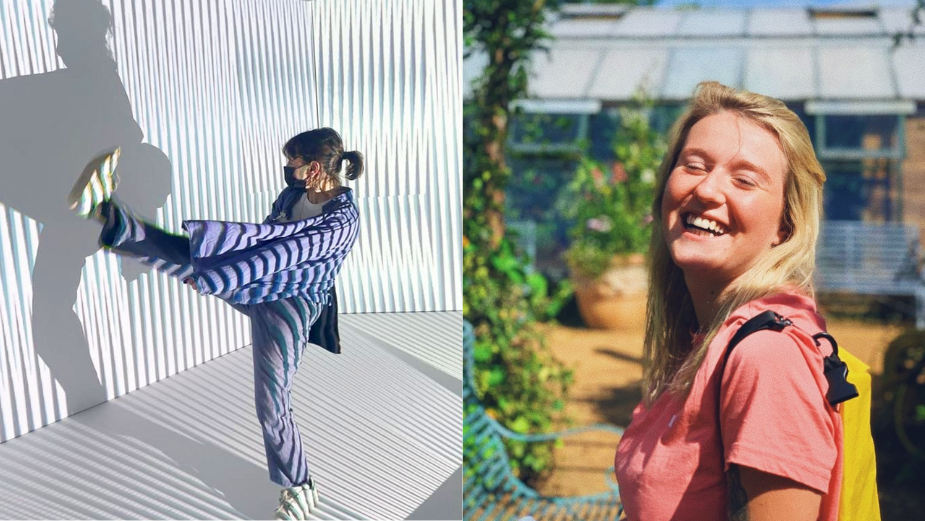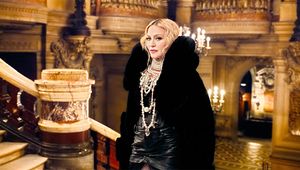
On the Rise: London’s Next Gen of Fashion and Sport Creatives to Know Now

LBB’s Uprising channel is brought to you in partnership with Ridley Scott Creative Group in ongoing efforts to facilitate opportunities for the next generation of creative talent.
The Uprising channel amplifies the voices of emerging talent in the industry, and with the support of Ridley Scott Creative Group, the industry’s top talent will have an even louder voice on LBB’s global platform. The channel is an opportunity for up-and-coming talent to be celebrated for their artistry, personality, and inspirations, with each feature exploring their creative background, niche craft obsessions, the work they are most proud of, and views on the state of the industry.
London’s infectious, creative energy has long been lauded by visitors and residents alike. It’s then no wonder that some of fashion and sport’s brightest emerging creatives all reside in this vibrant place. Full of ambition and fresh ideas, the creatives from Cake, Dark Horses, and Iris might only be getting started when it comes to their careers but they’re already making a memorable mark with their work. Today, we speak to them all about their career journey so far, discuss what they’ve been working on, and get to know their thoughts on the fashion and sport categories.
Mica Anthony
Creative

LBB> How and when did you realise you wanted to be a creative?
Mica> When I found out that it existed as a job! Someone I knew told me they worked as a ‘creative’ in an advertising agency and it blew my mind that a job with a solid career path that allowed you to dream up ideas for campaigns and see them through was a possibility. I was pretty much sold at the idea of combining all of my creative passions and interests into a job that could be super fulfilling.
LBB> How did you get your start in the industry
Mica> A referral for a job posting for a junior creative during lockdown. I still had to go through the full interview process - which included creating and presenting my first ever deck of creative concepts for pretty senior people within the business. I’d already had some experience doing social creative for brands and I’ve always been a creative person in general, so it was a case of pulling all my knowledge and experience together and going for it. I don’t think I’d have got through the door without the referral because I didn’t have any agency experience, so for that I’m very very grateful! It’d be great to see more platforms/schemes (without the age cap of 25) for career switchers getting into the industry.
LBB> What are some of the most significant projects you’ve worked on?
Mica> Probably a social campaign for PUMA Women’s last year called 'PUMA300'. The idea came from a REAL human insight (not just data repackaged as an insight) that me and my creative partner for the project could really relate to and turned into an inspiring piece of work that encouraged women and girls to get moving their bodies. We worked with some incredible sportswomen of all levels and a female crew to create a beautiful social campaign that I also got to cameo in!
LBB> What do you find particularly interesting about advertising in the sport category?
Mica> I think it’s the relatability that sport has at all levels. Whether you loved or hated it, we all did it at school to varying degrees, so there’s an in for everyone. It’s also the human stories we get to tell with it. Sport has a strong emotional pull on many people’s hearts - whether it’s watching it or participating, and we get to tap into people’s real human emotions and tell stories.
Eve De Haan and Josie Beaumont
Creatives

LBB> How and when did you realise you wanted to be a creative? Why did you choose sport in particular?
Eve> I always knew I wanted to do something inherently creative that involved writing and coming up with outlandish ideas, but it wasn’t until I discovered the actual role existed through friends in the industry that it felt like the perfect fit. I gravitated towards sport partly because I live and breathe football, but also because I’ve seen and felt the huge impact sport can have on society, both for individuals and wider culture. To be involved in something so influential and at the apex of culture is super exciting.
Josie> I never had a lightbulb “I’m going to be a creative moment”. Truthfully, I didn’t know someone could even be a ‘creative’ as an actual job. It sounded too good to be true. Initially all I ever really wanted was to go to uni. It just so happened that the course that sounded the most fun was a Creative Advertising course. I fell hard and fast for this weird world of art and copy. I had to explain to my parents that when I said I had a partner I didn’t mean a life partner and that drawing stuff all day and writing ‘slogans’ - as my mum would call it - was a normal way to spend nine grand a year.
When I first came to London, it was a desperate scrabble of take-what-you-can-get, any job will do to get my foot in the door. After a year or so of my first proper agency job, I finally felt like I was starting to relax. I found myself gravitating to work I felt passionate about, and that was almost always sport and exercise.
LBB> How did you get your start in the industry?
Eve> I applied for work experience at an agency, intending to do a week with each department. There was no going back from week one with creative in which I came up with an idea that ended up getting picked by a client, so I ended up on an accidental crash course in creative advertising. With encouragement from the creative directors, I found a creative partner, built a book over six months and we hustled our way into the industry through crit-nights, networking, and free industry talks.
Josie> I became a creative entirely by accident. I barged into the wrong course introduction talk and being embarrassingly British, felt too awkward to leave. I then heard the words ‘second year trip to New York’ and I was hooked. Three years of learning how to make simplicity look cool and that trip to New York later, I was hooked on making stuff too. I moved to London, got on the dole and went on three book crits a week for what felt like an eternity. An uncountable number of pens, pieces of A3 paper, trips to Rymans (yep, we had a physical book) and mornings waking up on the day of crit thinking… ‘Oh god; is this good enough?’ Almost every time, it turned out, it wasn’t. Until one day it was. Finally, a placement. After a gruelling year of agency work and book work, we went to FCB Inferno. Got a placement, lost a pitch, and got hired.
LBB> What are some of the most significant projects you’ve worked on?
Eve> Shelter’s 'No Home Kit' campaign will always be a particular highlight. Creating something so simple yet so powerful is what this job is all about. Seeing how widespread the campaign became, bringing hundreds of teams together across every tier of football, all to help combat homelessness, shows how much good sport can bring.
Another was the season launch of the Women’s Super League, a rallying cry against pigeonholing women’s football into some dainty, inferior version to the men’s game or a patronising CSR project for brands to bandwagon upon. Presenting these footballers as the elite, competitive and powerful athletes that they are, felt important and long overdue in the football space.
In the same vein, launching ‘The 101’ with Just Eat, kickstarting 101 new grassroots womens’ teams across the country was important; addressing an issue in the grassroots space (womens’ accessibility to teams), whilst treating it as a celebration of the sport’s growth rather than a patronising take on ‘the journey’.
Josie> I’ve worked on some great projects but I'm particularly proud of the UK Violence Against Women and Girls Home Office campaign, which amazingly has been used as part of teaching materials in schools. Sport England’s This Girl Can, helping the sports and fitness industry make better spaces for women, supporting healthcare workers give clearer advice to new and expecting mums and inspiring those with long term health conditions to get active with We Are Undefeatable. As well as the Premier League’s No Room For Racism Anywhere campaign.
LBB> What do you find particularly interesting about advertising in the sport category? Any trends you've recently spotted?
Eve> Sport is constantly in a state of flux; always evolving and changing, while somehow staying the same. Being able to concurrently drum into stalwart fans, generational devotion, team heritage, along with the exciting promise of boundless opportunities and the great unknown is a really unique and rich space to create in. It’s also a world where emotion is only felt to the extremes: utter anguish, or utter joy, which makes advertising in it that bit more special.
In the football world, the overlap with fashion has never been so tangible. Collaborations are being dropped left, right and centre, from an unprecedented PSG X Jordan collab bringing the pitch to the heart of the streetwear scene, to players like Jack Grealish and Mbappe teaming up with brands like Gucci and Dior respectively. From catwalks to superstars, ‘blokecore’ to designer shirt drops, the lines between football and fashion culture are becoming increasingly blurred.
Josie> From working on various brands within Sport England I could see all the small and mighty effects sport has on everyday people. It’s an outlet to escape violence, to make new friends, immerse in new cultures, learn something completely new, go back to something old. I became amazed by the way sport brings people together in a million different ways, for a million different reasons. It feels like something that’s bigger than advertising, beyond just asking people to buy stuff for better sales figures. It’s something that can and will make your life better. You can see these messages coming through as it becomes trendy to feature the everyday person in ads. There seems to be a drive to make activity more accessible. But it would be interesting to see what brands can do to listen to communities, provide programmes and bake inclusivity into their brand that has longevity above a short-term PR collab.
Kelian Grant and Ben Parmenter
Creatives

LBB> How and when did you realise you wanted to be a creative? Why did you choose fashion in particular?
Keilan & Ben> Having met on the creative advertising course in Falmouth, we were both in agreement that adland was for us. To be able to sit there and think of ways to make foot cream, cleaning gloves or baby formula aspirational, sensational or hyped was exciting. Now in our current position as creatives at Iris Worldwide, we’re embracing the chance to put a smile on someone’s face and make them feel something through our work.
LBB> How did you get your start in the industry?
Keilan & Ben> As creatives, we’re essentially giant sponges, soaking up everyone else's passion and interests. Driven by our passion for advertising, we spent this time absorbing as much knowledge as we could, and learning from the people and places around us.
While still at university, we set our sights on building a network. We reached out to everyone with their foot in the door and asked them to give us some of their time. After 35, 40, maybe even 50 book crits, we finally had a book that we were proud of.
LBB> What are some of the most significant projects you’ve worked on?
Keilan & Ben> We were especially proud of the work we created for The New Blood D&AD Top Trumps brief, which landed us a graphite pencil. Our project focused on the world of sneakerheads. It took us exactly one week to become our target market, and we spoke about shoes till our souls left our bodies.
Time spent understanding sneakerheads also gave us the opportunity of seeing the frustrations of the community. We found that bots and scalpers had turned a once small ‘queue-at-2-am-community’ into an online automated “sorry you didn’t get the shoe” hate fest, which left the old hobbyists more and more bitter towards new sneaker collectors. The community was in a civil war.
Shoe brands have tried to stop bots and scalpers through added authentication and random ticket mechanisms — but judging from the community’s reaction to every shoe drop, these solutions weren’t effective. So, we developed ‘Top the Drop’, a simple solution to make the worst part of the sneakerhead experience the best.
We proposed that Nike partnered with Top Trumps to host a battle royal community game. When you win a game, you go up a place in the queue. When you lose a game, you go down. We utilised the human yet random nature of the card game to beat the bots and give power back to the community. And even those who didn’t ‘cop the creps’ would get limited edition trump cards related to the shoe being sold.
We learnt of our success in the new blood awards while on placement at Iris Worldwide, an agency we had long admired. Shortly afterwards ECD Grant Hunter and GCD Ross Taylor sat us down and very cool-ly slid us a contract to come onboard full time. We happily accepted.
Today, we are working on most of Iris’s notable clients, including Pizza Hut, Adidas Terrex, and Nectar. Although many of our current bits of work are in development, we would say our most eye-opening client has been Terrex, which sits between the worlds of fashion, sports, mental health and even social mobility. Through working on Terrex, we’ve been educated on the power of equal access to the outdoors and its ability to help people in different ways. Terex’s brand platform, ‘United by Summits’, has emphasised why it’s important to celebrate all accomplishments in nature, from back-garden bird watching to record-breaking mountain climbing.
LBB> What do you find particularly interesting about advertising in the sport category? Any trends you've recently spotted?
Keilan & Ben> The most interesting trend we have seen is the rise of gorpcore and how it’s transformed the direction of the outdoor category. Functional outdoor wear is no longer for the fanatical climber, but also the London fashionista. Gorpcore shows the power that gen z has in earned media. Take Arc'teryx, for example. They use Gore-Tex to create incredibly waterproof products, which went viral after TikTokers wore them in the shower to show how well they worked. Not only do we love the joy people are getting out of functional clothing, but we are also loving that it's inspiring a generation of people to treat fashion differently. People are getting excited to explore the outdoors, positively affecting their mental health and connecting us all back to nature. After all, there's a nice feeling in looking like you ‘get out’, especially when you’re as pasty as us.













